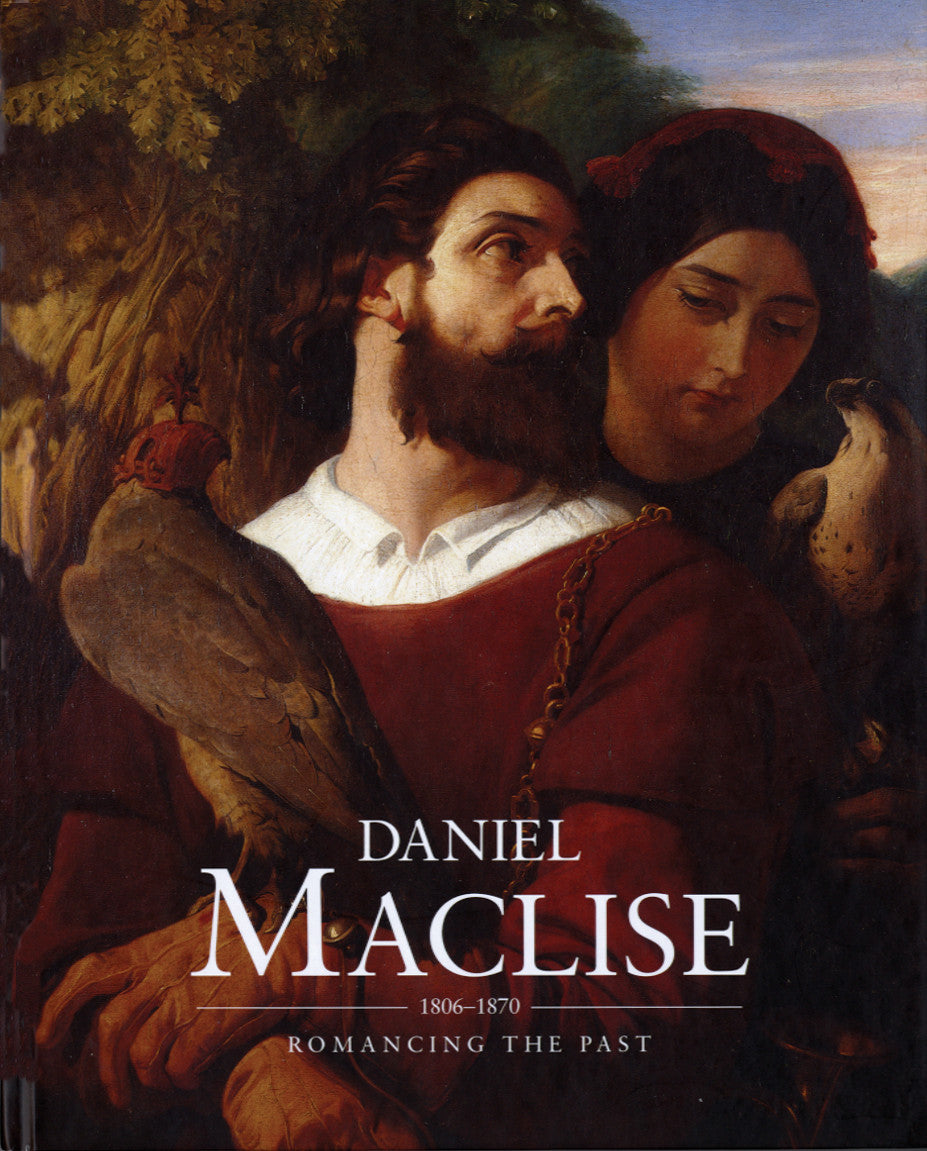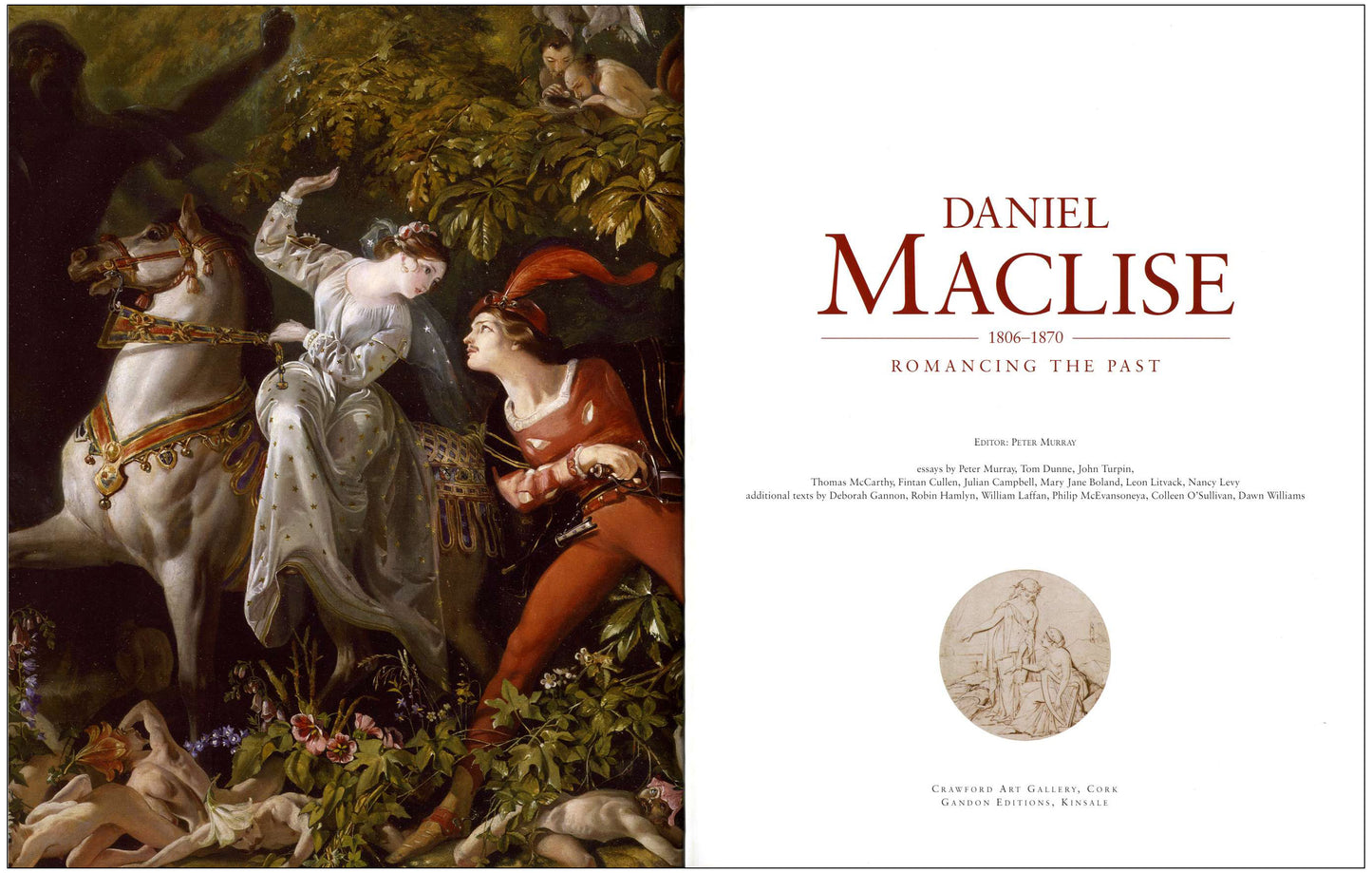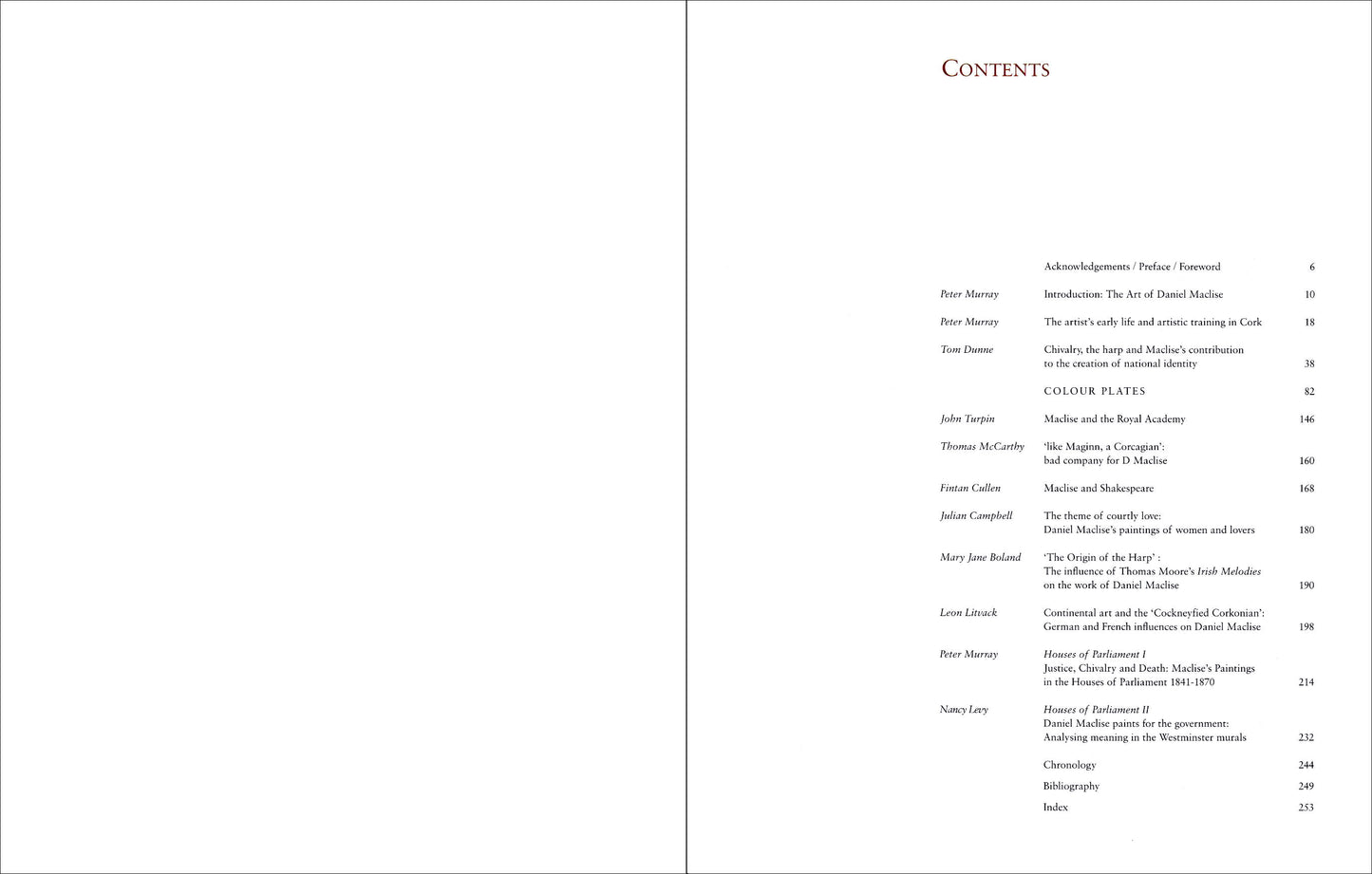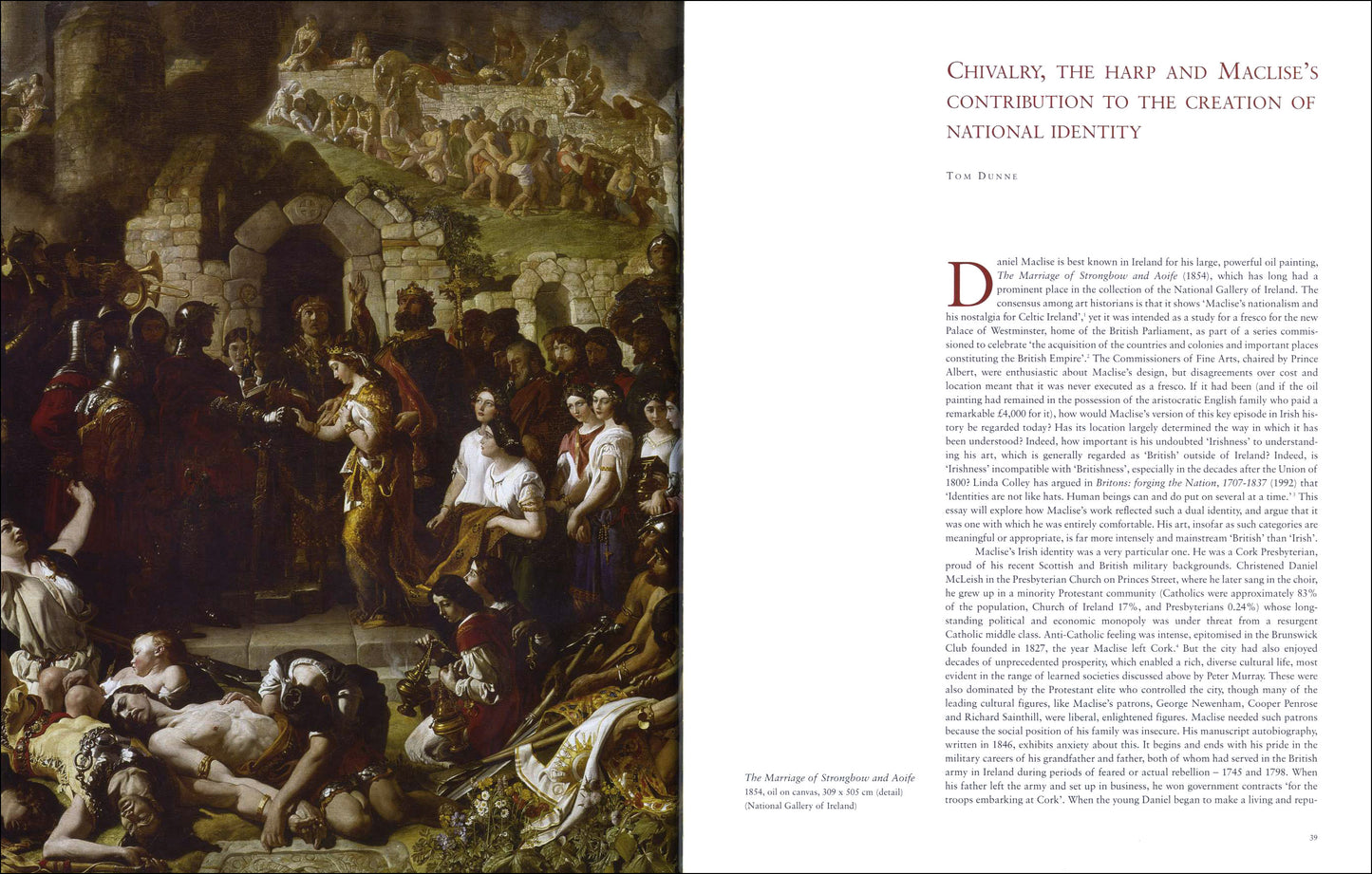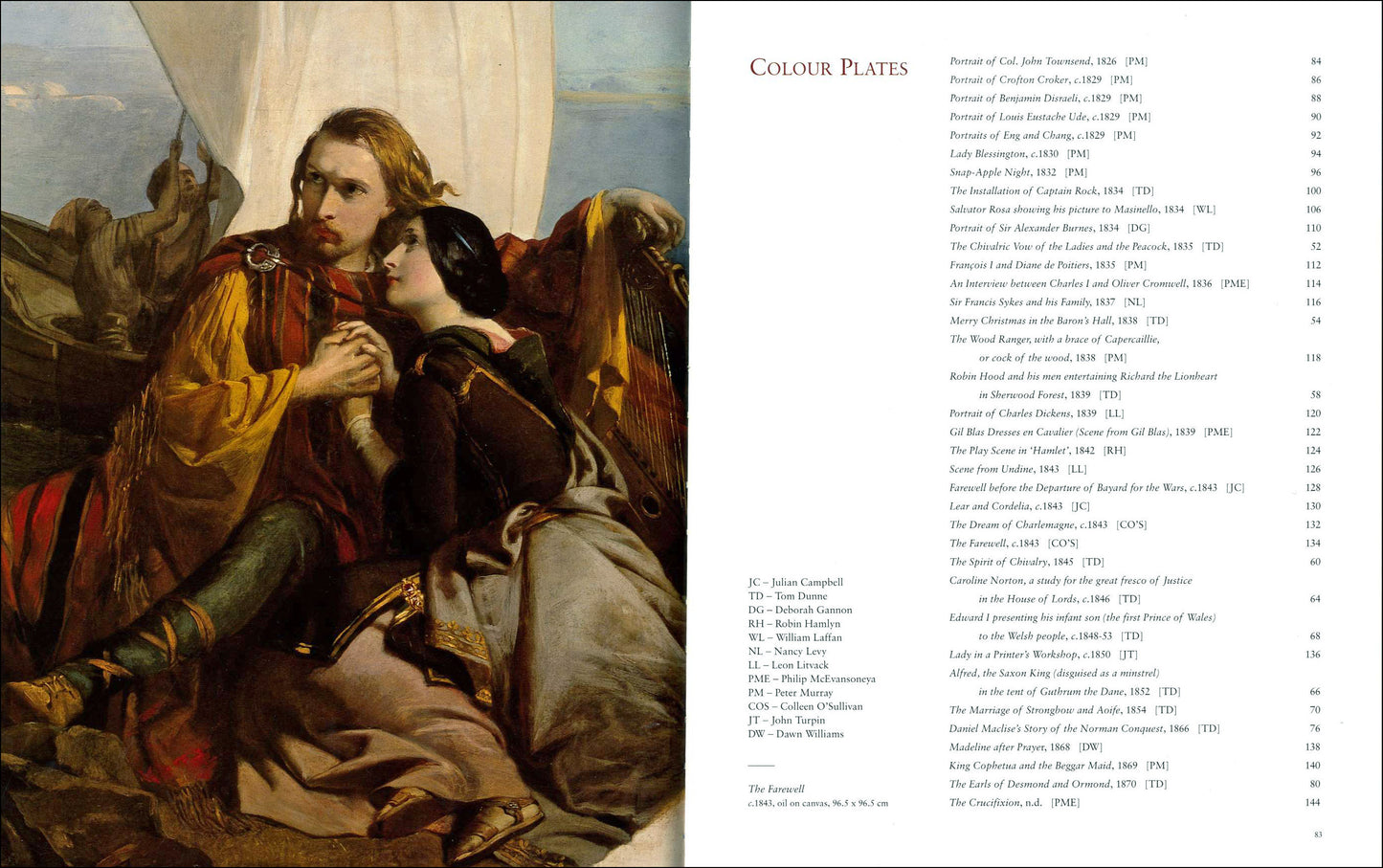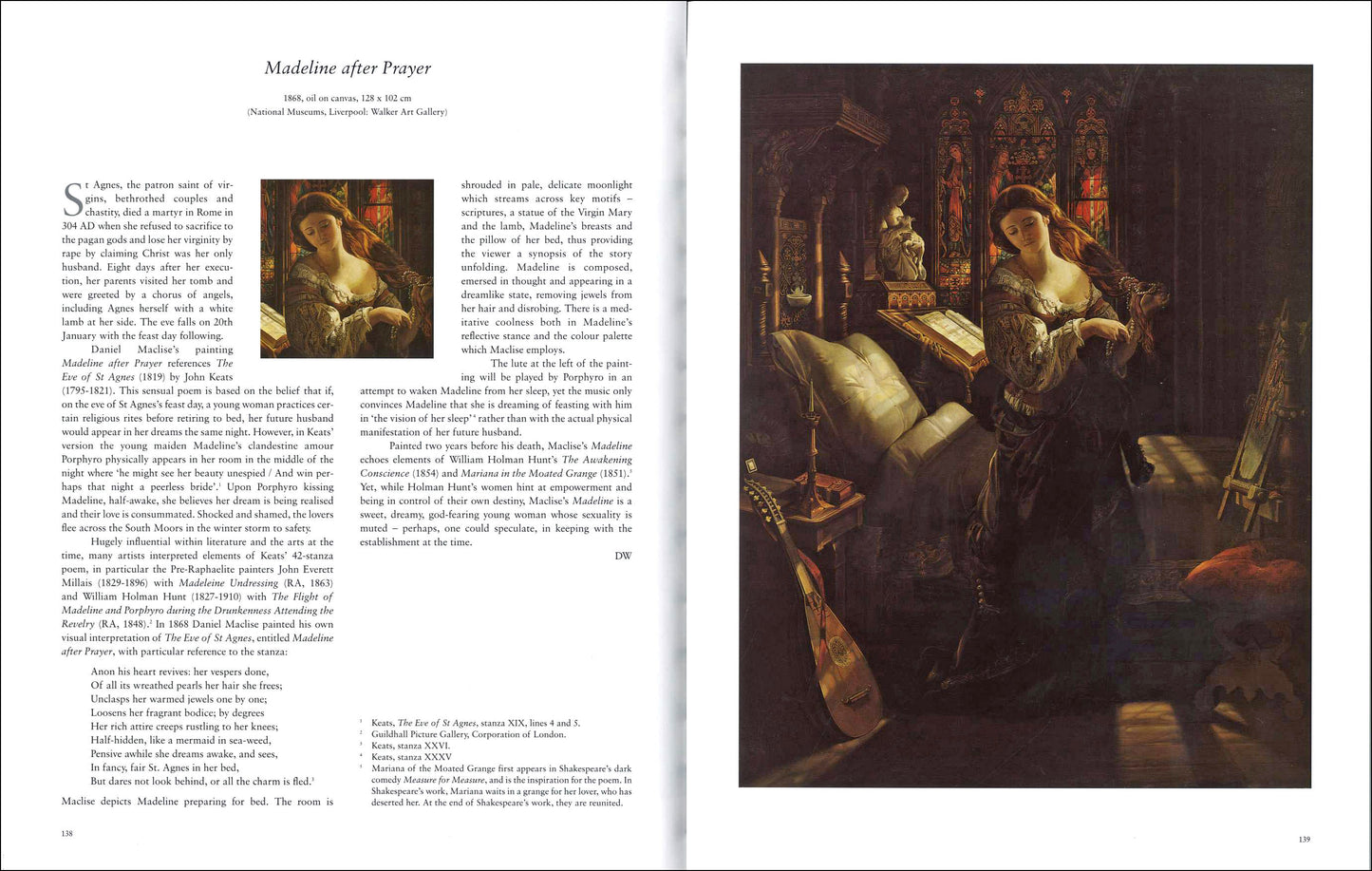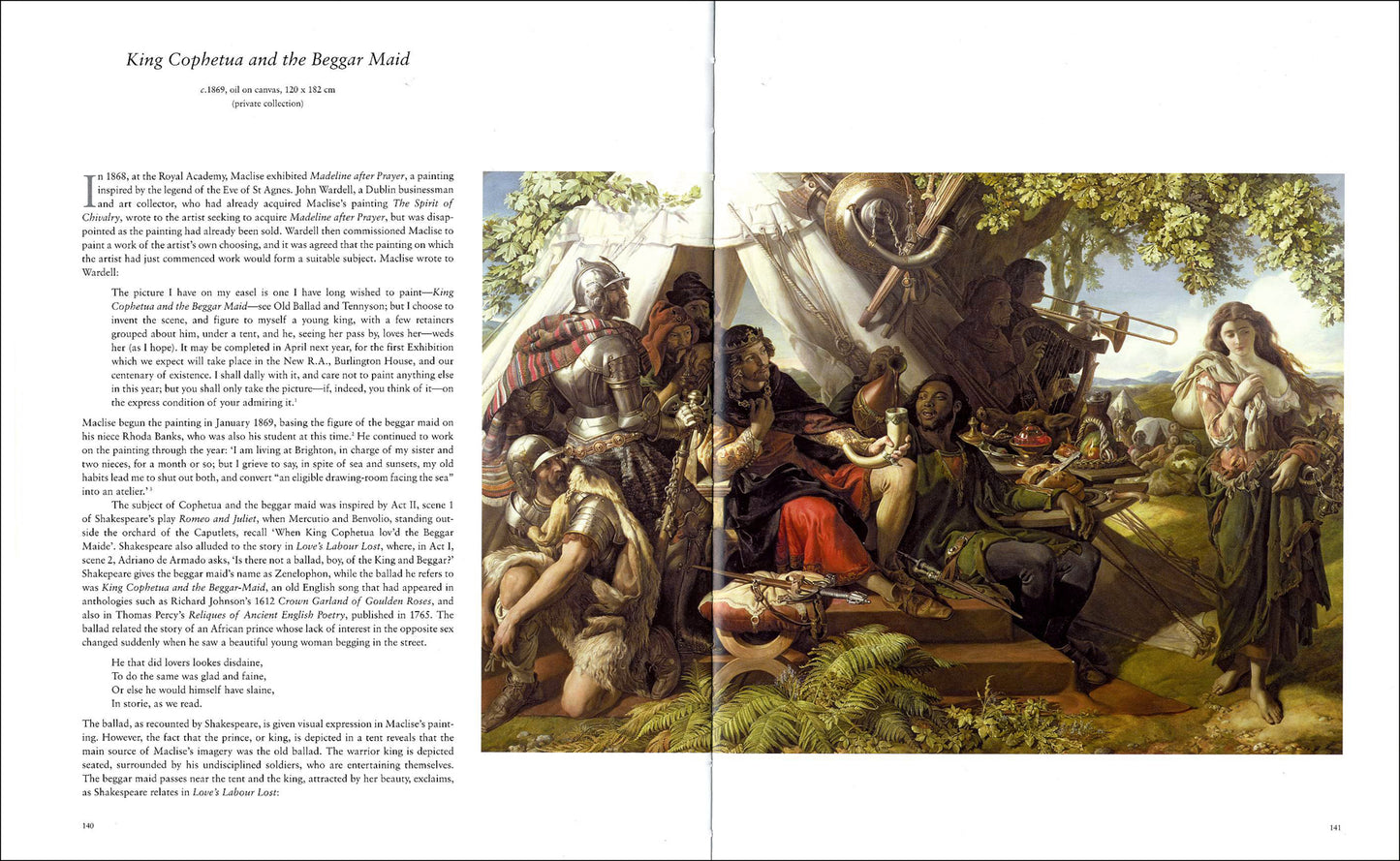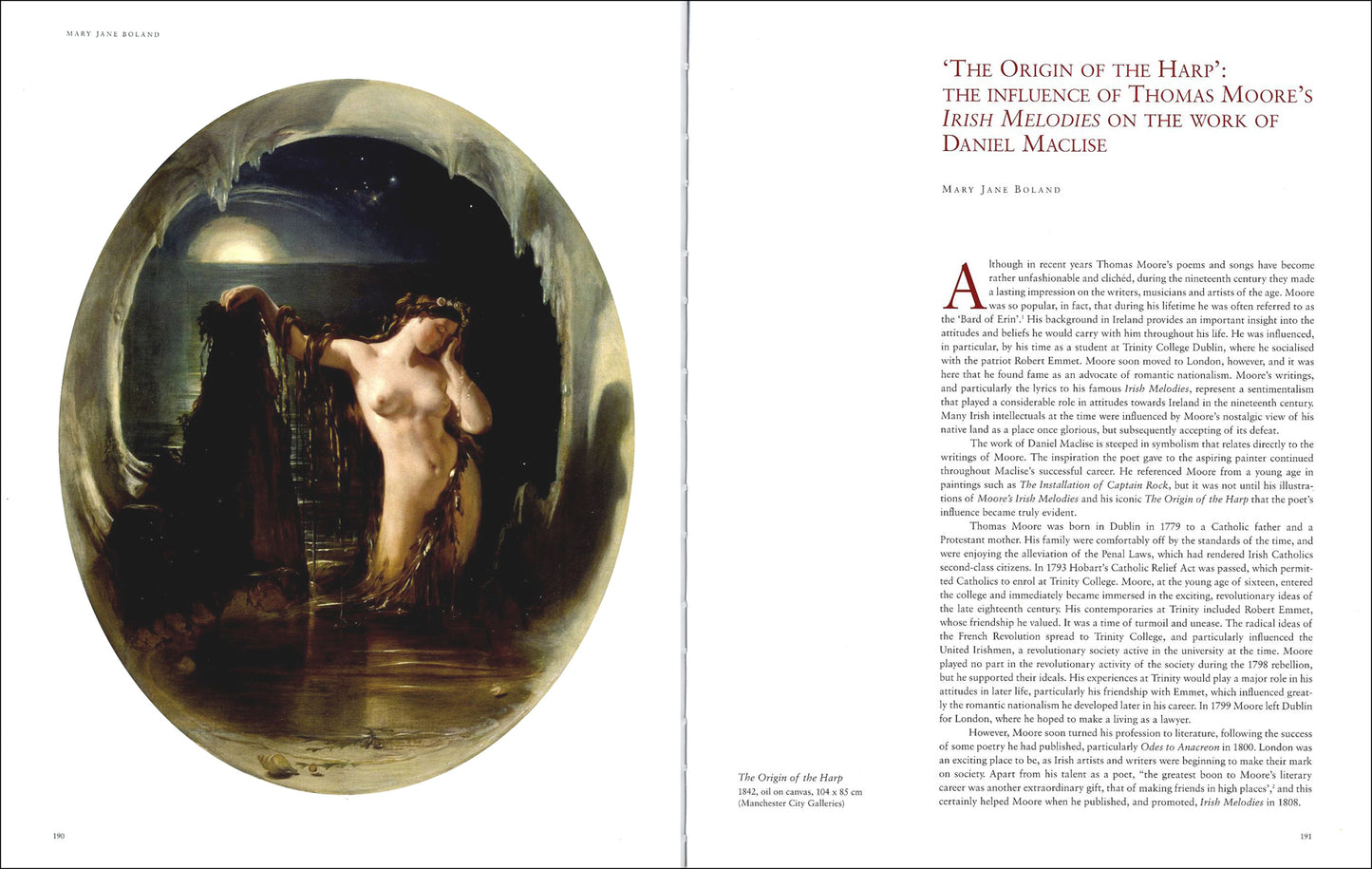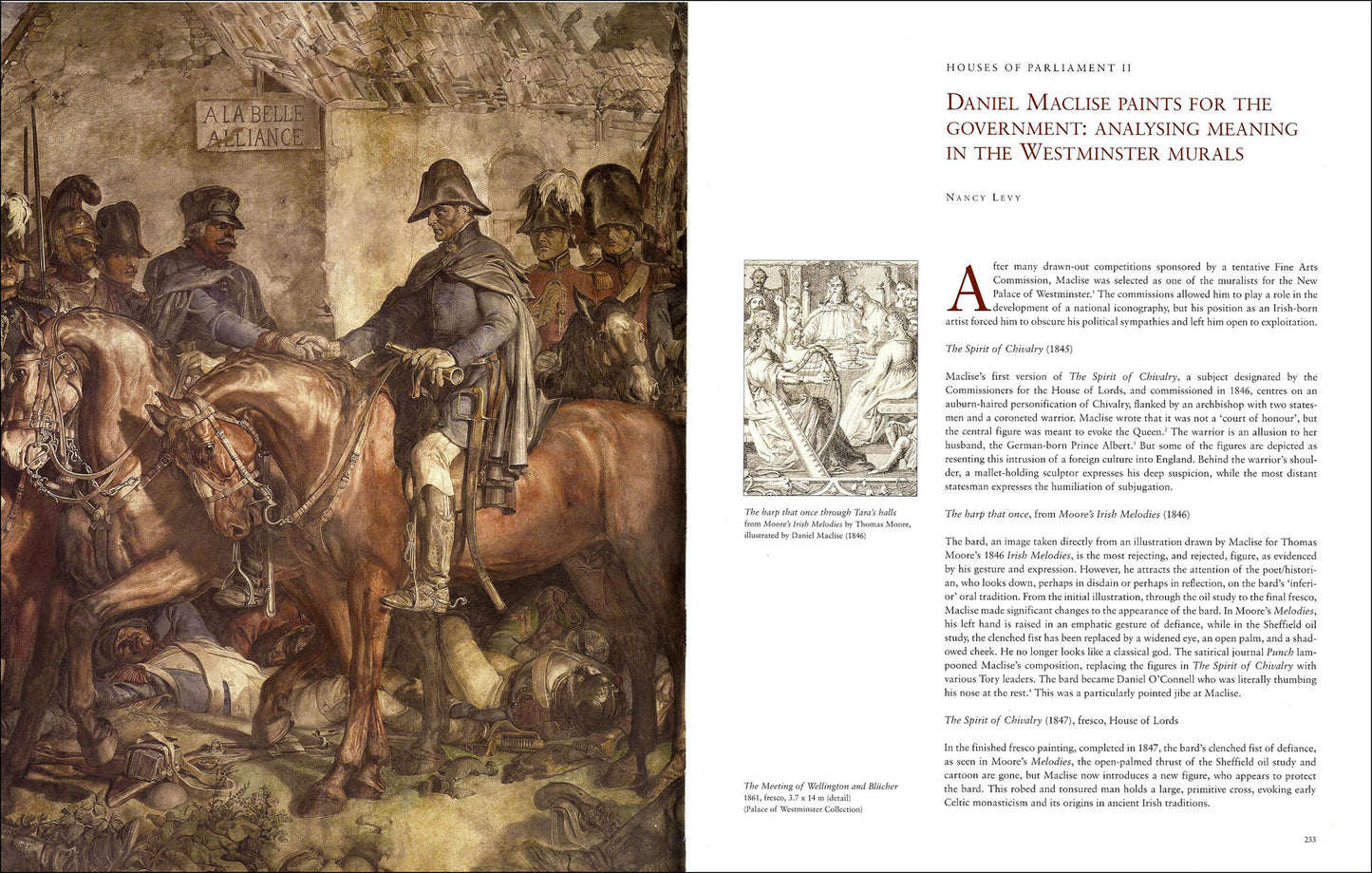Crawford / Gandon
DANIEL MACLISE (1806-1870) – Romancing the Past
DANIEL MACLISE (1806-1870) – Romancing the Past
Couldn't load pickup availability
Share
ed. Peter Murray
essays by Peter Murray, Tom Dunne, John Turpin, Thomas McCarthy, Fintan Cullen, Julian Campbell, Mary Jane Boland, Leon Litvack, Nancy Levy, et al
ISBN 978 0948037 665 256 pages (clothbound hardback) 30x23.5cm 272 illus index
The paintings, drawings and illustrations of Daniel Maclise bring to life scenes from history and literature, to transport viewers into a world of romance and imagination. Gifted with a vivid imagination, this Cork-born artist portrayed events from medieval or Renaissance history, and the works of Shakespeare, Goldsmith, and even French and Italian writers. This fascinating and sumptuous large-format book is a groundbreaking monograph on a major 19th-century Irish painter.
_____
EXTRACT
"Replete with authentic costume, buildings and weaponry, the paintings, drawings and illustrations of Daniel Maclise represent a brave attempt to bring to life scenes from history and literature, to transport viewers away from the commonplace realities into a world of romance and imagination. Gifted with a vivid imagination, this Cork-born artist portrayed events from medieval or Renaissance history, and depicted in extraordinary detail the battles of Trafalgar and Waterloo. Apart from his History paintings and portraits of contemporaries, Maclise’s canvases are, for the most part, visualisations of episodes from the works of authors, notably Shakespeare, Goldsmith and Walter Scott, but he also drew from the Decameron and works by less well-known French and Italian writers.
Avoiding the chilly Classicism of Lawrence Alma-Tadema or Lord Leighton, the morbid Gothic imagination of Francis Danby and the tranquil pastoral scenes of Constable, Maclise created dramatic images that appealed both to intellectuals hoping to establish a ‘national’ school of painting in Britain, and also to the mainstream of popular culture. His intense interest in the medieval world anticipates the Pre-Raphaelite movement, with Holman Hunt, Waterhouse, Burne Jones and Rossetti all treating the same subject matter in paintings of the later nineteenth century.
As with a great deal of late Regency and early Victorian visual culture, the art of Daniel Maclise is both realist and escapist. He was relatively untroubled by the notion that history should strive towards objectivity, and he depicted scenes from the past as if they were on the stage of a London theatre, employing costume and setting to create narrative set pieces full of drama. His paintings are peopled with beautiful women, grotesque dwarves, fairies, kings, tyrants, wrestlers and lovers. Although escapist, they also provide a window into the psychology of the artist, who invested his work with much of his own imagination and sense of self. But beneath the surface there is often an underlying sense of unease. Maclise depicts scenes of cheerful feasting and courtly love, but hints at darker passions. His medieval pageants are full of smouldering glances and stolen kisses. Forbidden, thwarted or illicit love between men and women is a recurring motif. His characters, yearning for the unattainable, are surrounded by emblems of love and jealousy."
— from the introduction by Peter Murray
|
CONTENTS Acknowledgements / Preface / Foreword 6 Introduction: The Art of Daniel Maclise by Peter Murray 10 The artist’s early life and artistic training in Cork by Peter Murray 18 Chivalry, the harp and Maclise’s contribution to the creation of national identity by Tom Dunne 38 COLOUR PLATES 82 Maclise and the Royal Academy by John Turpin 146 ‘like Maginn, a Corcagian’: bad company for D Maclise by Thomas McCarthy 160 Maclise and Shakespeare by Fintan Cullen 168 The theme of courtly love: Daniel Maclise’s paintings of women and lovers by Julian Campbell 180 ‘The Origin of the Harp’: The influence of Thomas Moore’s Irish Melodies on the work of Daniel Maclise by Mary Jane Boland 190 Continental art and the ‘Cockneyfied Corkonian’: German and French influences on Daniel Maclise by Leon Litvack 198 Houses of Parliament I Justice, Chivalry and Death: Maclise’s Paintings in the Houses of Parliament 1841-1870 by Peter Murray 214 Houses of Parliament II Daniel Maclise paints for the government: Analysing meaning in the Westminster murals by Nancy Levy 232 Chronology / Bibliography / Index |
